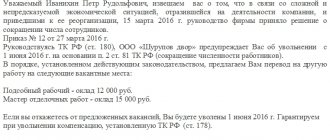The concept of loss in terms of civil law
Recovery of damages as a form of civil liability is enshrined in the Civil Code and a number of regulations. The legislation contains a number of synonymous concepts - “damage”, “losses”, “harm” and others. In essence, these concepts have identical meaning.
Losses can be material and moral:
- Moral harm or damage involves causing moral or physical suffering to a person. This type of damage is not of a property nature. The consequence of causing moral harm can be damage to reputation, insult to personality.
- Material damage is damage to property, material resources of an individual, which resulted in loss of profit or the opportunity to make profit in the future. This type of loss has a pronounced property nature. Can be caused to an individual or legal entity due to a violation of the terms of a contract or other illegal actions.
Any loss or damage is the consequences of a person’s negative actions or inaction towards another person or group of persons.
Losses subject to compensation are specified in the Civil Code of the Russian Federation. In civil law, losses are property consequences, negative, unprofitable for the creditor, which were the consequence of an offense - the actions of the debtor.
Forms of manifestation of losses:
- Lost profits - income that could have been received, provided that the situation that occurred through the fault of a person or group of persons, organization, would not have disrupted the plans;
- Actually caused damage - expenses, material losses that one person suffered due to the fault of another person or organization.
Recovery of damages as a way to protect civil rights
According to Article 12 of the Civil Code of the Russian Federation, recovery of damages is one of the forms of protection of civil rights.
This is also important to know:
How judicial collection of receivables is carried out: a description of the process
Direct recovery of damages is a type of protection of rights that requires compensation for damage caused to a person by the actions of another person or group of persons, or an organization.
In civil law, recovery of damages is considered as a universal way to protect the rights of a citizen.
According to Article 15 of the Civil Code of the Russian Federation, losses are certain expenses that the owner of the property incurred due to the unlawful actions of another person. When considering losses in the context of civil law, several of their characteristics are distinguished:
- They are predominantly of a property nature;
- Demand compensation in accordance with the principles and rules of law;
- Are grounds for liability of the guilty party;
- Always have a negative meaning;
- They require an argument of guilt, and the accused party has the right to prove his innocence;
- The process of compensation for damages occurs exclusively on legal principles;
- The injured party must prove damages.
Since recovery of damages is considered a universal method, it can be used even in cases where it is not provided for by specific rules of law or contract. This method of liability applies to various legal facts and is considered the maximum possible measure of civil liability. The most modern form is direct recovery of damages. In most cases, damage is subject to full compensation - this is stated in Article 15 of the Civil Code. Legal entities have grounds to demand full compensation for damage in the event of a situation of failure to fulfill obligations under a contract with this legal entity. However, recovery of damages is not necessarily the only measure used as punishment for the guilty party.
The purpose of compensation for damage, according to the Civil Code, is to restore the right of a citizen that was violated due to the unlawful actions of another person. When determining the amount of damage to be paid to the injured party, it is necessary to take into account the actual damage caused to the property and lost profits.
Free legal consultation We will answer your question in 5 minutes!
Ask a Question
Free legal consultation
We will answer your question in 5 minutes!
Ask a Question
Types of losses
Loss or damage is material losses incurred by one party due to the fault of the other (individual or legal entity). Damage always has negative consequences for the injured party, therefore the task of civil law is to protect the property rights of the victim within the framework of current legislation.
This is also important to know:
How long are the terms of judicial collection and how are they calculated?
Damage comes in two forms:
- Real damage (property, material damage, real loss of property or income) is harm actually caused, subject to a direct negative impact on the property of the victim.
- Lost profit is harm caused to possible future profits from owning property.
Damage may also be presented as:
- Property damage is a type of loss that directly affects property. Direct recovery of damages is applied.
- Non-property or moral damage - personal insults, damage to reputation. In this case, we mean infliction of moral or physical suffering.
Compensation is based on the principle of full compensation for the damage caused to the injured party. This applies to lost profits and real damage. The solution to each issue that concerns full compensation for damage requires individual consideration - not in every situation a universal method of solving the problem can be applied.
The main type of compensation for damages as a form of protection of civil rights is the payment of a penalty. Used as a form of civil liability in various cases. The penalty is collected in the form of money - certain interest for the use of other people's finances or for violation of obligations under the contract.
Types of penalties:
- A penalty is a type of financial liability that is collected exclusively in accordance with the law. The use of this type requires payment of the full amount in excess of the penalty amount.
- Settlement penalty: the part that is not covered by the penalty is paid, subject to the existence of losses. This type is universal and does not require the application of special legal norms.
- An alternative penalty is rarely used - this is a variant of the penalty in which the creditor himself chooses the method of payment - either losses or a penalty.
- Exclusive penalty: a method of payment that excludes payment of the amount of damages. To protect the rights of the victim, only the penalty itself is paid.
What needs to be proven to recover damages
The subject of proof in a case for recovery of damages includes the following circumstances:
- The fact that there is a basis for the recovery of damages under contractual obligations (non-fulfillment or improper fulfillment of the contract concluded by the parties).
- A specific cause-and-effect relationship between the basis for compensation of losses and the occurrence of losses. Such a connection must be established with a reasonable degree of certainty, but in practice it is often required to prove the inevitability of losses - this is the most difficult element in proving;
- Amount of damages caused under the contract (assessment of consequences);
- Guilt of the causer of losses (taking into account the fact that business entities are “guilty” until proven otherwise, that is, a presumption of guilt has been established in this case);
- What measures were taken to prevent the occurrence of losses (assessment of the good faith of the causer of losses);
- When recovering the amount of lost profits - evidence of what preparations were made to extract it (a license was obtained for a certain type of activity, equipment was purchased, etc.). Proving lost profits is a very complex category of disputes due to the peculiarities of proof.
This is also important to know:
Property that cannot be foreclosed on under Art. 446 Civil Code of the Russian Federation
We provide paid legal consultations and provide legal services for judicial representation in Yekaterinburg and other regions. If you need a lawyer or damages attorney, give us a call. Consultation with a lawyer online is free of charge.
You can use the form on our portal. We will protect your rights or recommend another experienced, qualified, reliable, competent lawyer or lawyer.
Mandatory conditions for recovery of damages
Recovery of damages is a form of civil liability for a business. Therefore, they can be collected from the counterparty only if the following conditions are met:
- Actually, losses
Examples and gist are given above. It is also mandatory for the court to indicate the amount of damages caused.
- Illegal behavior of the counterparty that led to losses
This can be expressed either in the commission of illegal actions or inaction. These may include violation of rights in the form of causing harm not only within the framework of contractual relations, but also without the existence of such.
It is important to note that conduct will be considered unlawful regardless of whether the counterparty knew that its conduct was unlawful. In accordance with established judicial practice, any harm caused is determined to be unlawful.
Examples of illegal behavior:
Unilateral refusal of a contract if there is a condition that it is prohibited.
The tenant filed a lawsuit against the counterparty-lessor for the recovery of losses arising as a result of the unilateral termination of the real estate lease agreement.
The parties did not provide in the agreement for the lessor's right to unilaterally terminate the agreement early, therefore the defendant violated the rules for terminating the transaction, which indicates the illegality of his behavior.
Termination of a leasing agreement in the absence of debt on leasing payments.
A large lessor unilaterally terminated a bus leasing agreement with a counterparty who had regularly made payments under the transaction.
The lessee did not agree with this and went to court to declare the actions of the business partner invalid and recover damages from him. The court found that the plaintiff fulfilled its obligations in good faith, therefore the lessor had no legal grounds for terminating the contract and subsequent confiscation of the buses.
- Cause-and-effect relationship between the counterparty’s unlawful behavior and losses
This condition is difficult to prove. First of all, due to the subjective assessment of the connection.
In practice, the affected business must prove that the unlawful actions of the counterparty led to or became the cause of losses.
For example, in one of the cases the court considered the cause-and-effect relationship not proven, since no agreement was concluded between the parties.
In another case, a fire that occurred in a rented hangar was caused by the tenant's failure to comply with fire safety regulations, resulting in losses to the building owner. The cause-and-effect relationship in this situation is obvious.
- Presence of guilt
In Russian civil law there is a presumption of guilt of the offender. Moreover, he is obliged to prove the absence of guilt.
A company that has suffered a loss may refer to the guilt of the counterparty without proving it. However, the offender may be found not guilty provided that he took all measures to properly fulfill his obligations or to eliminate the negative consequences that were required of him.
In this case, the affected business must provide evidence that the specified measures were not taken by the counterparty.
For example, the contractor, knowing about the circumstances that threatened the strength and safety of the customer’s building, did not warn him about this in a timely manner and did not take all possible measures to eliminate them. His guilt is obvious.
- Under certain conditions, compensation for losses is possible without the fault of the counterparty
The Air Code provides that in the event of an aircraft collision, the owner of the aircraft, that is, the person innocent of the collision, bears responsibility for damage caused to passengers and property of third parties. In this situation, after paying damages, the owner company has the right to demand reimbursement of costs from the culprit.
To recover damages from the counterparty, the injured company must prove all the conditions of the offense. The absence of even one of them means that a business will not be able to protect its rights.
Procedure for collecting damages
Recovery of damages is a universal, basic form of liability in civil law, fixed by the Civil Code. The basic principle is full compensation for damages. According to the law, a person who has suffered losses as a result of the unlawful actions of another person or organization has the right to demand full compensation for material and moral damage. Compensation is also required if damage was caused by government organizations or officials as a result of lawful activities. In this case, there are two exceptions:
- The injured person consented to certain actions by government authorities.
- The injured citizen asked for certain actions to be taken, knowing the possible consequences.
The principle of full compensation for the protection of rights applies in all cases, except for situations that are resolved under a pre-signed agreement.
According to the agreement, it is likely that another amount will be paid, less than the full cost.
To fully compensate for the damage, the injured party must prove the existence and extent of losses; the guilty party, in turn, has the right to defend itself and prove its innocence by legal means.
The concept of real direct damage and lost profits, their features
- Real direct damage is a form of loss when it comes to direct damage to a citizen’s property. Actual damage includes expenses incurred by the creditor to compensate for the damage caused. For example: failures in the delivery of products to a store due to the fault of a transport company caused the loss of products, so the store owner needs to incur certain expenses. Direct recovery of damages is used for compensation.
- Lost profit is a form of harm associated with the loss of possible income that could have been received if the harm had not occurred. For example: when working as a taxi, a taxi driver receives the main profit from driving, but if the car is damaged through no fault of his own, he loses the opportunity to earn money - this is his lost profit.
This is also important to know:
How receivables are written off due to impossibility of collection
The actual damage is assessed in fact and is predominantly of a property nature. To assess the actual damage and lost profits, it is recommended to use the professional services of specialists.
What does the loss consist of?
It consists of real damage and lost profits.
- Real damage is primarily the loss or damage to property belonging to the injured party, as well as the costs necessary to restore it.
- Lost profits are lost income that the injured party could have received if its right had not been violated.
Judicial practice specifies the concept of real damage. It refers, for example, to the costs of new materials that are used to restore property, decrease in value and complete loss of property, money paid as a fine.
Documents confirming actual damage are cost estimates, reports of loss or damage to goods, invoices for payment for purchased materials for repairs, and an appraiser's report.
The situation with the definition of lost profits is a little more complicated.
- Lost profit is lost income, which means its calculation is approximate and probabilistic. But this circumstance in itself cannot serve as a basis for refusing the claim.
The Supreme Court points out that when determining lost profits, the victim has the right to present not only evidence of taking measures and preparations to obtain it, but also any other evidence that indicates the possibility of obtaining it.
For example, the customer for the renovation of a store filed a claim against the contractor for damages caused by improper performance of the contract. After the repair work was completed, corrosion and cracks were discovered in the plaster layer, so the customer could not sell the goods.
In this case, lost profits can be calculated based on the plaintiff’s profit data for a similar period of time before the violation or after its elimination.
In any case, the calculation of lost profits must be as reliable and close to reality as possible, as well as documented.
Such documents may be contracts with third parties, payment documents confirming expenses. You can also use the opinions of an expert appraiser, who may be involved by the injured party.
However, there are situations when this is not necessary: for example, if there is documented data from previous financial reports or statements of accounts.
Limitation of debtor's liability
As a general rule, the parties to the obligation have the right, at their discretion, to limit the liability of the debtor (clause 4 of Article 421 of the Civil Code of the Russian Federation).
The conclusion of such an agreement is not allowed and it is void if it violates the legislative prohibition (clause 2 of Article 400 of the Civil Code of the Russian Federation) or contradicts the essence of the legislative regulation of the corresponding type of obligation.
If within the limits established by clause 4 of Art. 401 of the Civil Code of the Russian Federation, a pre-concluded agreement specifies circumstances that eliminate or limit the debtor’s liability for an unintentional violation of an obligation, then the burden of proving their occurrence is placed on him.
An agreement concluded in advance to eliminate or limit liability does not exempt from liability for intentional violation of an obligation (Clause 4 of Article 401 of the Civil Code of the Russian Federation). The absence of intent is proven by the person who violated the obligation (clauses 1 and 2 of Article 401 of the Civil Code of the Russian Federation).
Free legal consultation
We will answer your question in 5 minutes!
Free legal consultation We will answer your question in 5 minutes!
Call: 8 800 511-39-66
Ask a Question
Basis of dispute
Based on the results of the on-site inspection, the company's losses were reduced and held accountable. The company submitted an updated income tax return, which reflected an increase in losses by transferring expenses from deferred costs. Since this was done outside the period of the on-site inspection, the updated declaration was checked as part of a desk inspection. Based on its results, a decision was also made to hold the company accountable for committing a tax offense. The company considered it unlawful and appealed to the arbitration court to cancel the decisions.










